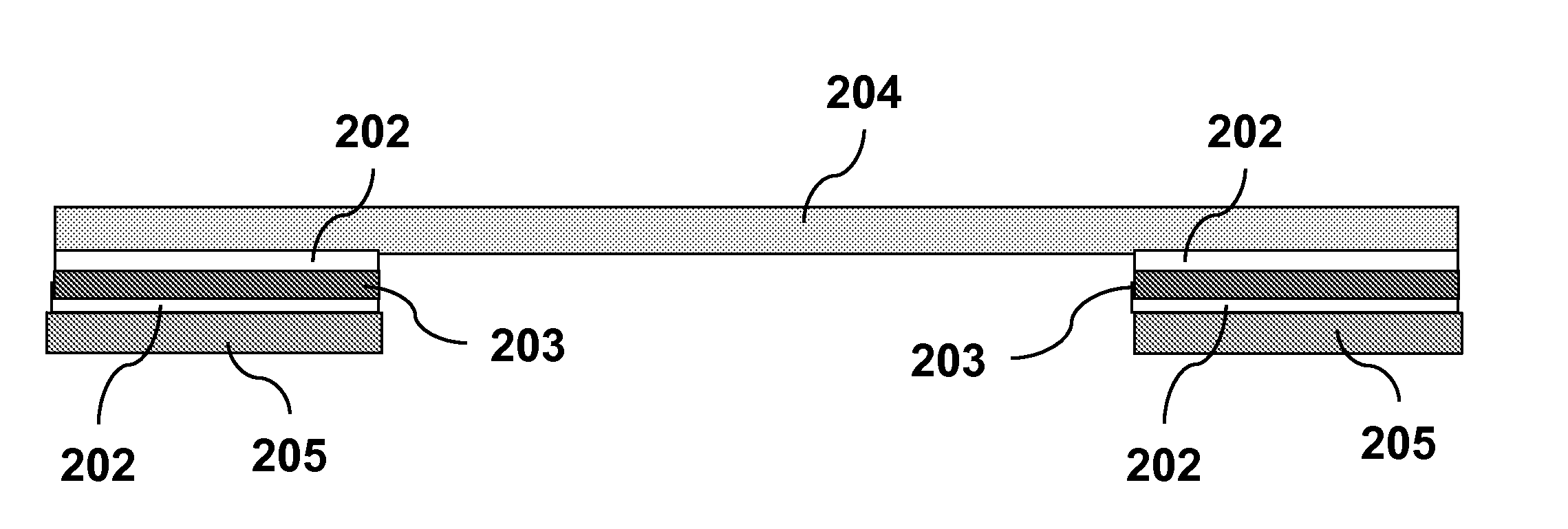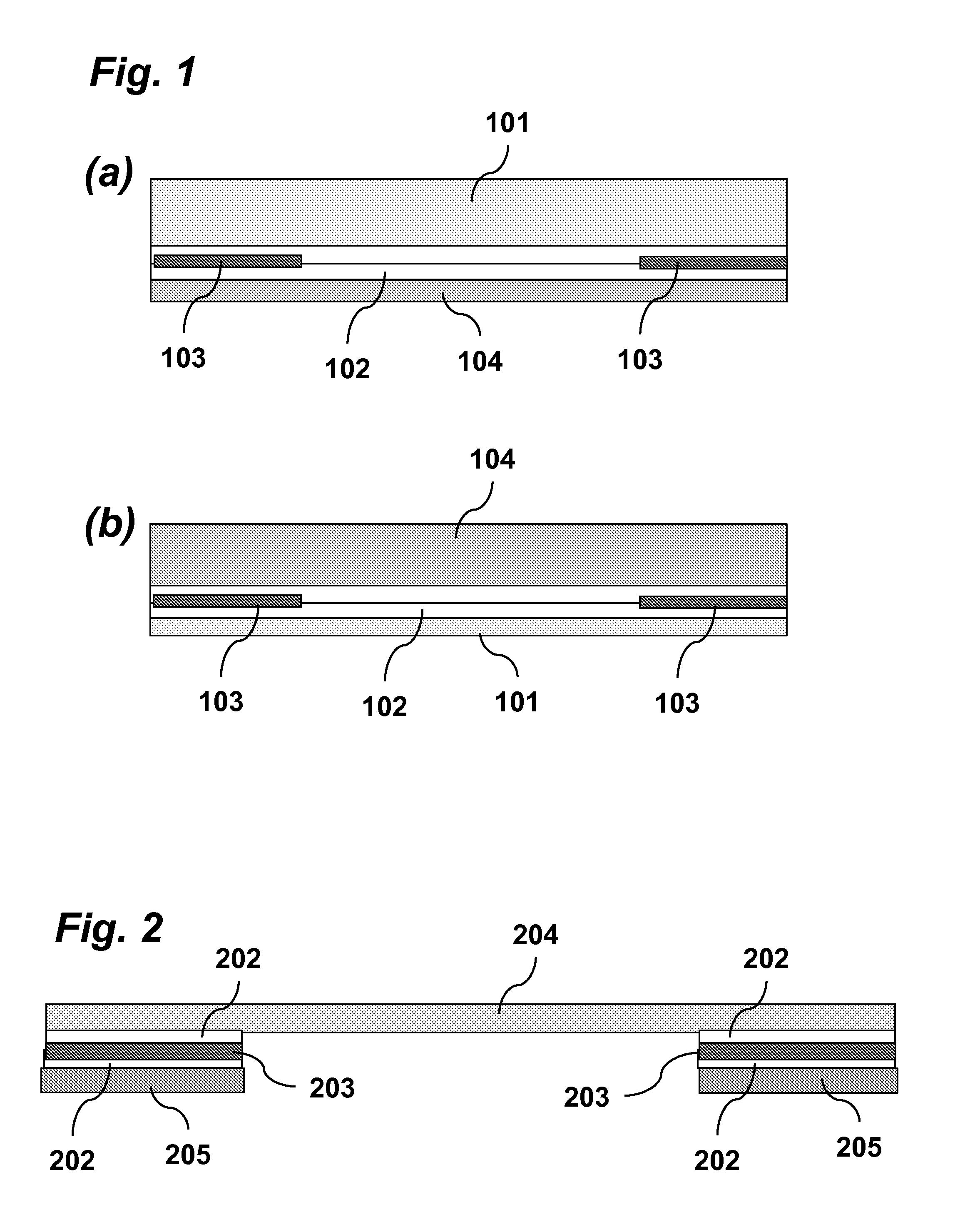Luminescent Electricity-Generating Window for Plant Growth
a technology of solar collectors and solar energy, applied in the direction of pv power plants, renewable energy machines, saving energy measures, etc., can solve problems such as harming plant growth, and achieve the effect of reducing cooling costs and improving efficiency and plant growth
- Summary
- Abstract
- Description
- Claims
- Application Information
AI Technical Summary
Benefits of technology
Problems solved by technology
Method used
Image
Examples
example 1
[0049]The 3 mm thick luminescent sheet contains polymethylmethacrylate (PMMA) with a fluorescent dye, Lumogen 305, is diluted into the sheet at a concentration of 0.006% by weight percent of Lumogen 305 in PMMA. A silicon PV cell is attached directly to the acrylic using an optical clear glue that is thermally stable above 85 C and allows for differential thermal expansion. A thin plastic sheet is laminated to the back of the substrate for protection. At 16% area of PV per area of luminescent sheet, the power efficiency is approximately 4%. The sheet absorbs less than 60% of the photons between 410 and 490 nm and less than 10% of the photons between 620 and 680 nm, and approximately 70% of the photons between 500 and 600 nm.
example 2
[0050]The 0.5 mm thick luminescent sheet contains polymethylmethacrylate (PMMA) with a fluorescent dye, Lumogen 305, diluted into the sheet at a concentration of 0.03% by weight percent of LR305 in PMMA. This film and the silicon PV cells are laminated to a glass or acrylic sheet that is 3 mm thick using EVA. A thin glass sheet is laminated with EVA to the back of the substrate for protection purposes. At 16% coverage, the power efficiency is approximately 4.5% and the sheet absorbs less than 60% of the photons between 410 and 490 nm and less than 10% of the photons between 600 and 690 nm, and approximately 70% of the photons between 500 and 600 nm.
example 3
[0051]The 0.2 mm thick luminescent sheet contains polymethylmethacrylate (PMMA) with a fluorescent dye, Lumogen 305, diluted into the sheet at a concentration of 0.1% by weight percent of Lumogen 305 in PMMA. The silicon PV cell is attached to a supporting frame, and the luminescent sheet is coupled to the silicon PV using an optical glue. At 10% coverage, the power efficiency is approximately 3% and the sheet absorbs less than 50% of the photons between 410 and 490 nm and less than 10% of the photons between 600 and 690 nm, and approximately 60% of the photons between 500 and 600 nm.
PUM
 Login to View More
Login to View More Abstract
Description
Claims
Application Information
 Login to View More
Login to View More - R&D
- Intellectual Property
- Life Sciences
- Materials
- Tech Scout
- Unparalleled Data Quality
- Higher Quality Content
- 60% Fewer Hallucinations
Browse by: Latest US Patents, China's latest patents, Technical Efficacy Thesaurus, Application Domain, Technology Topic, Popular Technical Reports.
© 2025 PatSnap. All rights reserved.Legal|Privacy policy|Modern Slavery Act Transparency Statement|Sitemap|About US| Contact US: help@patsnap.com



